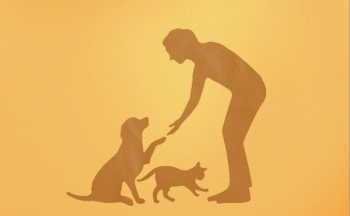
- November 2018
- Volume 3
- Issue 8
Managing Noise Fears and Phobias
Many types of loud sounds can trigger phobias in dogs, but there are a number of ways to address the problem.
Noise phobia, or noise aversion, is a very common presentation to veterinary behaviorists, second only to aggression. Some dogs are presented to the veterinarian because the owners are concerned when the pets shake and hide during a thunderstorm or fireworks; others are brought in when the dogs claw through a wall or jump from an upper-story window in response to the noise.
In either case, the veterinarian needs to ask who, what, where, and when:
- Who is the fearful dog? In a multidog household, it may not be clear which pet is affected if the owner is not home when the fear-provoking sound occurs.
- What is the dog doing in response to the noise? Is it simply hiding, or is it destroying the house?
- Where is the dog? Is the animal inside the house trying to get out or outside the house trying to get in or run away?
- When is the dog most fearful? The answer to this is usually pretty easy to determine. Independence Day and New Year’s Eve bring fireworks, and summertime is peak season for thunderstorms. Many dogs are presented on the fifth of July or the day after the season’s first thunderstorm.
RELATED:
- Noise Phobia: Underestimated
- WVC 2017: Tips for Addressing Noise Phobias and Motion Sickness in Pets
TYPES OF NOISES DOGS FEAR
The noises to which dogs develop phobias can be divided into naturally frightening noises and learned phobias. The noises that most commonly frighten people and animals include thunder, fireworks, and gunshots.
Thunder
The booming crack of thunder is naturally frightening, and it’s one of the most common causes of noise phobia. It is interesting to note that noise phobia related to thunder is one of the few behavior concerns that is likely to appear late in life. This is probably because an older dog may have had the opportunity to experience a thunderstorm that causes a tree to fall on the house where the animal lives; the dog then associates the sound of thunder with a very scary event. There may be some social facilitation as well; dogs that are scared of thunder are more likely to be owned by people who are afraid of thunder.
Fireworks
Some dogs learn to associate fireworks with terror when they try to flee the noise and inadvertently choke themselves when tethered outside (learned phobia). Unfortunately, fireworks displays and private fireworks detonation seem to be increasing. Today fireworks can be heard during the entire first week of July as well as around other holidays, such as New Year’s Eve.
Gunfire
Gunfire is another very loud noise that a dog may fear. Many dogs develop a phobia and react fear- fully to even a distant shot. Of course, the owners who are most upset about gunshot phobias are often hunters whose dogs disappear back to the truck at the first shot rather than retrieving the duck or flushing the pheasant.
Insect Buzzing
Dogs may be afraid of buzzing sounds, especially those created by bees. It is not clear whether these dogs have been stung and thus associate the noise with the pain of a sting. Some dogs like to catch insects, and if a dog caught a bee or a wasp, it could have learned that the buzzing noise means an intense pain in the mouth.
Microwaves and Smoke Detectors
Microwave ovens produce high-pitched noises to which some dogs develop a phobia, either because the sound is painful to the animal or because the sound is similar to the noise its electronic collar produces to warn the pet of impending shock.
The noise a smoke detector makes is loud, but when the batteries are low, these detectors emit a sound to alert the homeowner. Unfortunately, that sound is high pitched and sometimes not very loud.
TREATING NOISE PHOBIAS
The treatment approaches for noise phobias are intended to mask the noise, medicate the dog, or desensitize the animal. Masking the sound can be accomplished by playing music, preferably classical music, at high volume when the sound is occurring. Sound-dampening earmuffs made for dogs are available, but few dogs tolerate them.
Desensitization
Although desensitization is intellectually the best and least expensive approach, most owners do not have the skills or patience necessary to teach the dog not to be frightened. The idea behind desensitization is that by playing the frightening sound at very low volume and pairing it with a delicious treat or a favorite game, the owner will help the dog learn a new association and extinguish (forget) the fear response. The volume can be raised gradually, but only if the dog shows no signs of fear (eg, panting, pacing, yawning, or showing the whites of the eyes).
Commercially available CDs purport to desensitize dogs as well. Other viable treatment options include pheromones (Adaptil) and compression shirts (eg, ThunderShirt).
Pharmaceuticals
Medications can be very helpful for pets with noise phobias. Medication can be used long term (ie, during the entire thunderstorm season, from the last frost in the spring to the first frost in the fall in temperate climates) or short term (eg, when a thunderstorm is impending). Tricyclic antidepressants such as clomipramine and amitriptyline (2 mg/kg twice daily) or selective serotonin reuptake inhibitors such as fluoxetine (1 mg/kg/ day) can be used long term. Because these medications take weeks to reach effect, they should be started well before thunderstorm season. The problem with most short-term oral medications is that they take about 30 to 60 minutes to take effect, by which time the dog may have already become alarmed and likely will not be calmed. Owners should be counseled to give benzodiazepines before a storm is predicted to hit.
Diazepam (0.5-2.2 mg/kg) and alprazolam (0.02- 0.1 mg/kg) can be used acutely, but they must be administered before a storm hits. Some owners are reluctant to do this, apparently fearing that the storm will pass and they will have wasted a pill. These owners should be reminded that the dog is really frightened and that it is cruel to withhold the medication even if it ultimately is not needed.
The availability of the α-2 adrenoreceptor agonist, dexmedetomidine (Sileo, Zoetis) has been a boon in the treatment of noise phobia because it acts so quickly when administered to the oral mucosa. The dose is 125 μg/m2. The only problem is that the drug is expensive, especially if storms are infrequent and the drug becomes outdated before it needs to be administered again.
Dr. Houpt treats horses, dogs, and cats with behavior problems. She is professor emeritus at Cornell University College of Veterinary Medicine, where she taught courses on equine, farm animal, and companion animal behavior. She is the author of Domestic Animal Behavior and has written numerous scientific articles.
Articles in this issue
almost 7 years ago
Achieving Emotional Well-Beingalmost 7 years ago
Synthetic Cadavers for Surgical Trainingalmost 7 years ago
Increasing Detection of Emerging Zoonotic Pathogensalmost 7 years ago
The Veterinarian's Role in Beekeepingalmost 7 years ago
99 Lives Cat Genome Sequencing Initiativealmost 7 years ago
Pet Cloning: Where We Are Todayalmost 7 years ago
Ophthalmology Made Simplealmost 7 years ago
Honing in on the Real Needs of Veterinariansalmost 7 years ago
What Veterinarians and Veterinary Students Really WantNewsletter
From exam room tips to practice management insights, get trusted veterinary news delivered straight to your inbox—subscribe to dvm360.






